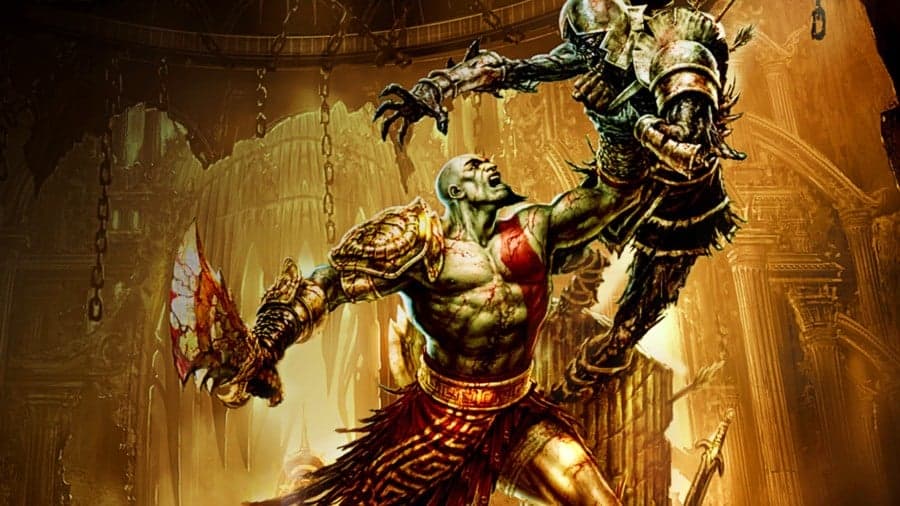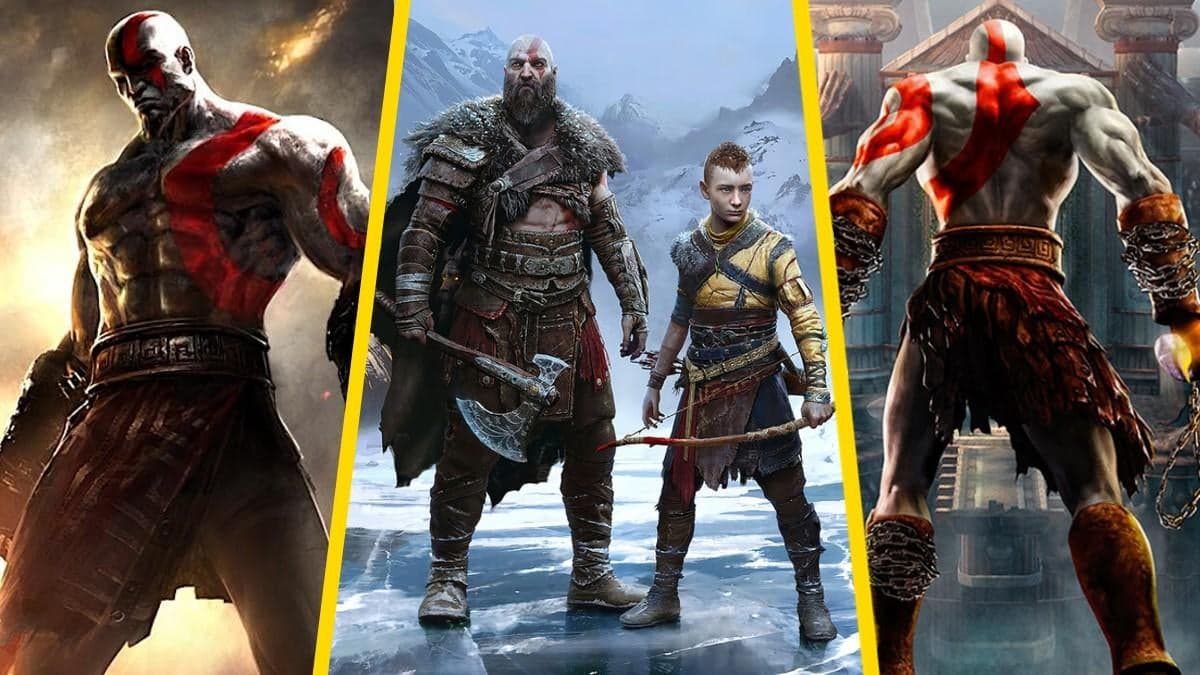
Leaked screenshots of Bluepoint’s cancelled live-service God of War caught my eye for one reason: they looked unapologetically Greek. Marble pillars, sulfur pools, bright bloodstone accents—this wasn’t the muted Norse palette of the recent duology but the jagged grandeur of the PS2/PS3 originals. One image even shows Hades not as a final boss, but as the proprietor of an armory: a vendor-type NPC standing in what feels like a budding hub space. MP1ST first published these prototype-level captures, and multiple reports confirm this was just the start of development. In the end, Sony shelved the project, and Bluepoint quietly pivoted to another action game. As someone who still fondly remembers tinkering with God of War: Ascension’s multiplayer, I’m equal parts intrigued by the “what if” and relieved this title never joined the endless treadmill of content updates.
The leaked visuals aren’t a glossy pitch deck—they’re raw, prototype-level builds. Geometry is blocky in spots, UI elements are skeletal, and lighting looks like placeholder passes. Yet the vision reads loud and clear: Ancient Greece, splashed with a “cursed” terrain effect that turns paths and pillars into corroded red—rust eating into iron. That kind of environmental affliction instantly signals a reusable gameplay lever: rotate challenge modifiers, refresh zones, and spin out daily or weekly objectives.
Hades as an armorer is the real signpost. In single-player God of War, gods drive plot or form climactic boss fights; in service games, they transform into friendly NPCs who dole out gear, quest contracts, and in-game currency. It’s a smart design pivot: retain narrative tone while slotting mythic characters into the vendor loops that define live-service economies. And make no mistake—the Greek setting isn’t just nostalgia bait. It’s a mythology packed with class archetypes (archers, berserkers, shield-bearers), legendary weapon fantasies (Poseidon’s trident, Zeus’s lightning), and arena-ready boss fights. All of which read like live-service gold on paper.
Here’s the rub: since 2018, God of War’s identity centers on deep, authored single-player storytelling. Yes, Ascension (2013) dabbled in multiplayer and assembled a small, passionate community—I’ll own up to late-night runs through its horde-style arenas—but it never shifted the franchise’s core appeal. Live-service games demand an endless stream of new loot drops, fresh activities, and balance passes. That model works beautifully for Destiny or Warframe, where power fantasies hinge on ever-improving “builds” and cooperative grind. For God of War, the power fantasy is Kratos’ personal arc: a cinematic journey that crescendos to a powerful finale, not an infinite lobby where the end never comes.
Even if Bluepoint nailed the visceral feel—and if any studio could, it’s the team behind the Demon’s Souls remake—monetization looms large. Battle passes, seasonal cosmetics, FOMO-driving limited bundles: these are table stakes in service-game land, but they clash with the more grounded, intimate tone Santa Monica Studio carved out in 2018. The risk isn’t merely bad optics; it’s brand dilution. As any Destiny veteran will tell you, goodwill evaporates the moment content cadence falters or rewards feel woefully stingy. Suddenly, that sense of mythic gravitas gives way to endless grind spreadsheets and microtransaction menus.

Looking at the bigger picture, successes and failures in live-service offer a roadmap for why this prototype never saw the light of day. Warframe launched in 2013 and steadily built a reputation on free updates, community trust, and a transparent road map—today it still boasts millions of active players. Destiny 2 learned hard lessons from its shaky start, doubling down on robust seasonal content and collaborative developer-community dialogue. On the flip side, Anthem’s collapse in 2019 showed how a strong combat engine can’t save a live-service title hamstrung by shallow endgame loops and underwhelming loot progression. Marvel’s Avengers stumbled with a disjointed narrative delivery and a mismatch between premium launch expectations and lackluster live updates.
In each case, the common thread is infrastructure: dedicated live-ops teams, robust netcode, and economy designers focused exclusively on retention loops. That’s a different skill set from the precise, high-fidelity craftsmanship Bluepoint is known for. Would Sony have built out Bluepoint’s headcount with economy teams, data scientists, and community managers? Possibly. But by the time you staff up, train pipelines, and iterate past beta, you’re well down the road—and the budget numbers start ticking into the hundreds of millions.
Zoom out to early 2021 and you see Sony’s ambition flare up: invest in multiple big live-service projects, from Uncharted initiatives to The Dark Pictures share-and-play concept. The first hints of trouble arrived in 2022, when several high-profile studios saw layoffs or project delays. By mid-2023, Sony publicly confirmed it was refocusing on its “both premium and live-service” roadmap, but quietly canceled or retooled a slate of in-development games. A permanent live-service God of War never received official pushback, but insiders point to this strategic shift as the death knell. Sustaining one breakthrough title is already difficult—sustaining a diverse portfolio is exponentially harder when development costs and community expectations keep growing.
Part of the challenge is performance metrics. Live-service titles live and die by retention rates, monthly active users, and average revenue per user. Even a powerhouse brand like God of War would start under intense scrutiny: hit day-one download targets, hit week-one retention, then maintain engagement for four-plus quarters. That’s a data treadmill that could steal focus and resources from premium tentpoles like Spider-Man 2 or The Last of Us sequel. For Sony, prioritizing clear, one-and-done blockbuster hits has proven safer and more lucrative.
There’s also the question of fit. Bluepoint’s reputation rests on two pillars: technical artistry and honed combat feel. They’re the first call when Sony wants a remake to set a new standard. But building a live-service ecosystem demands different DNA: live-ops support, persistent-server architecture, and ongoing gamut of balance patches. Sure, seasoned single-player designers can learn those chops, but is that the best use of their core talent? Right now, player demand for premium, self-contained experiences continues to outpace appetite for service-based titles.

Job listings on Bluepoint’s site over the past year hint at this pivot: roles for senior combat designers, environment artists specialized in cinematic lighting, and AI programmers focused on bespoke boss encounters. Notice what’s missing? Live-ops producers, economy analysts, or backend server engineers—standard hires at studios doubling down on service games. Instead, it seems Bluepoint is dialing back to the lane where they shine brightest: meticulously crafted, tightly curated action adventures that thrill from first cutscene to final credits.
Rumors suggest their next project is an original third-person melee action game—no Norse gods, no persistent hub worlds, just raw combat choreography and striking vistas. That tracks perfectly with the studio’s pedigree: uncanny enemy readability, weighty weapon feedback, and animated flourishes that sing on PS5 hardware. Whether they choose to cultivate a new IP or secure a beloved franchise reboot remains to be seen, but either path spells one thing: a finish line marked by “unforgettable” rather than “operate forever.”
This leak hooked me because it flirted with a version of God of War that leans into gleeful mythic pageantry without sacrificing raw muscle. Yet the more I sat with the concept, the more I realized Sony pulled the right lever. If you want co-op gods and rotating challenges, slot them into games conceived with that DNA. Don’t bolt the wheels onto a series whose strength lies in a spent moment of narrative payoff. And as for Bluepoint’s next move? A standalone action spectacle sounds like a fair trade-off for my download list.
Early screenshots show Bluepoint testing a Greek-set, live-service God of War prototype with Hades as an armory vendor and “cursed” zones. While visually promising, the endless-service model clashed with what makes God of War special. Sony’s broader retreat from live-service published the final word: shelve the experiment, and let Bluepoint do what they do best—craft one-off action epics.
Get access to exclusive strategies, hidden tips, and pro-level insights that we don't share publicly.
Ultimate Gaming Strategy Guide + Weekly Pro Tips